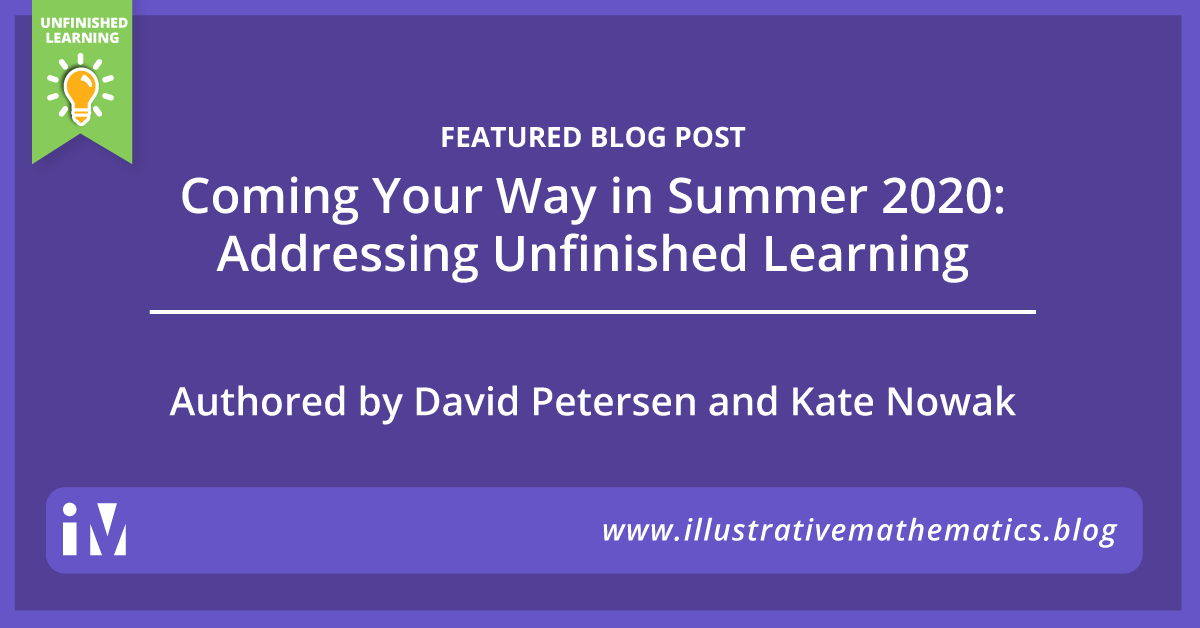by David Petersen and Kate Nowak
In our previous post, we described how we are thinking about planning for next fall. We are also creating some new resources to support users of IM K–12 Math in the fall. Some of this is to address unfinished learning from spring 2020, and other supports are intended to address the potential for distance learning in the upcoming school year. Part of this work is the K–5 unit adaptation packs described in an earlier post. Here is more of what you can look forward to rolling out over the summer.
To Address Unfinished Learning
Curriculum Adaptation Packs: Get Students Ready for Grade-Level Content
In the previous post we offered considerations for making strategic decisions about content. We are currently working on specific guidance for every unit in IM 6–8 Math and IM Algebra 1, Geometry, and Algebra 2. This guidance will show which lessons from previous grades will most efficiently get students up to speed for work in the current grade level. To make room, we will also provide guidance on which lessons can be compressed or deemphasized and which lessons are of higher priority so that every effort can be made to include them. Here is a working draft of the guidance for Grade 7, Unit 2:
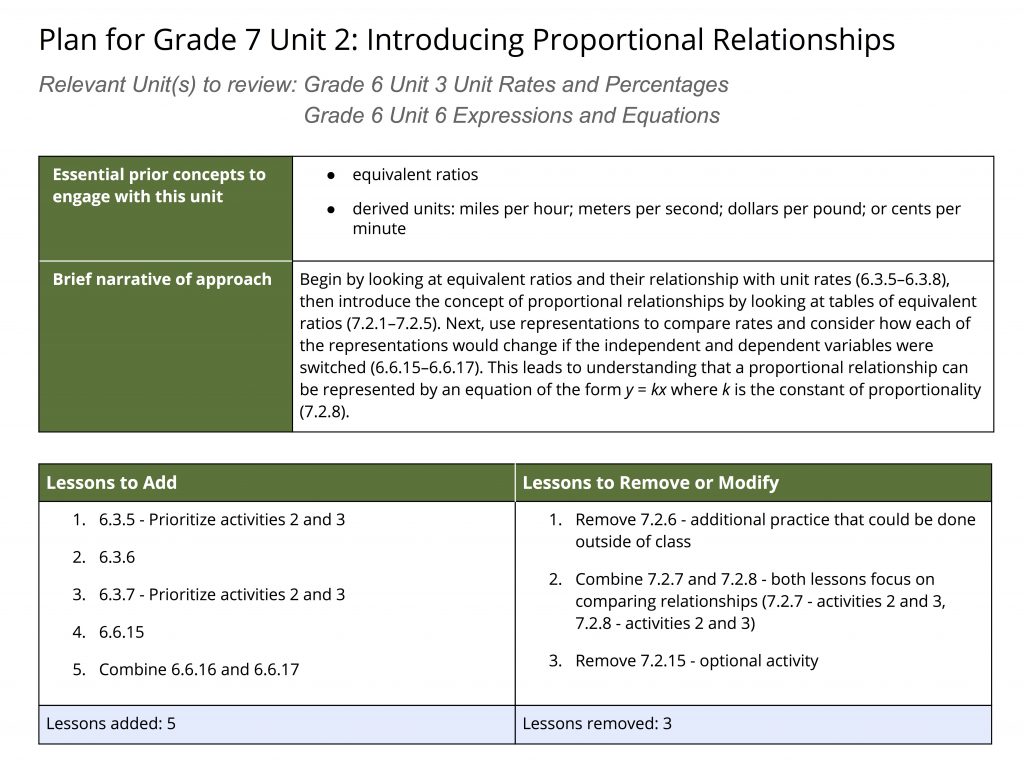
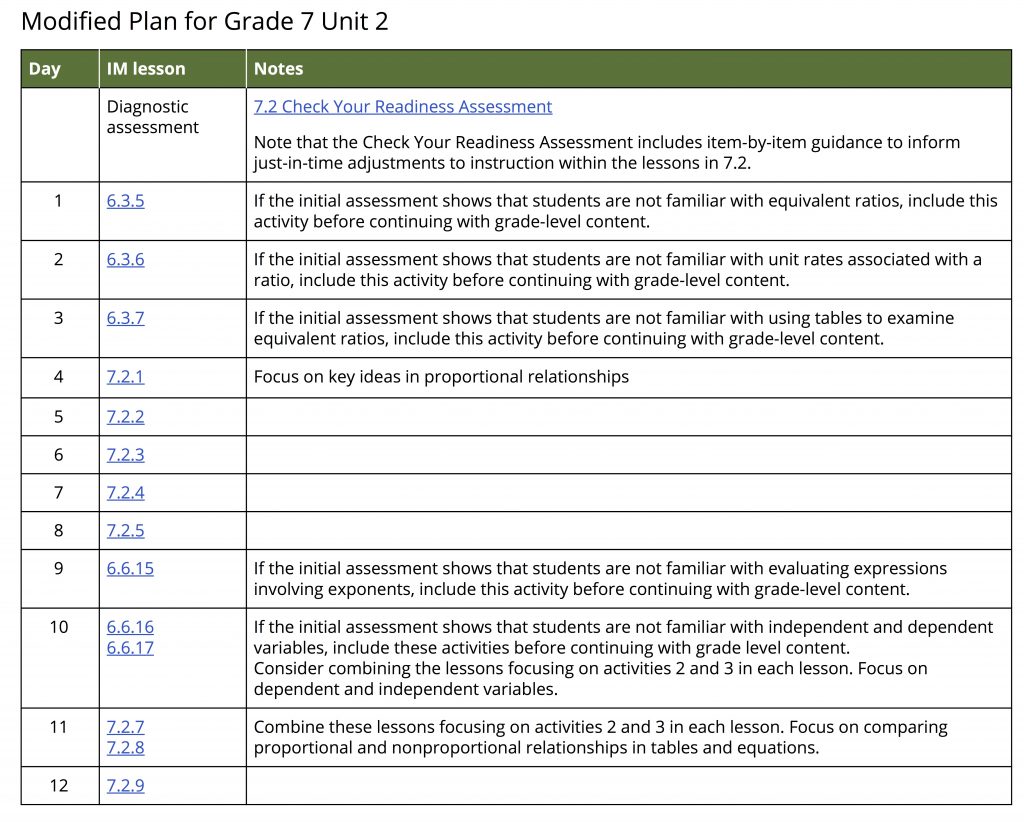
So that each grade 7 teacher doesn’t have to dig through the grade 6 materials and the accelerated materials to print the appropriate activities, we’ll provide pdfs that include only the activities needed to enact the additional recommended lessons.
Pacing is always a challenge, and adding in lessons to address unfinished learning adds an extra layer of complexity. To support this work, we are assigning a priority of low, medium, or high to each lesson in IM 6–12 Math. In addition, to make space for additional content, this guidance reinforces which units address major work of the grade, to help educators maintain focus and coherence.
Another part of this work expands the recommendations for using the results of cool-down formative assessments. When student work on a cool-down indicates that not all students have grasped the assessed ideas, teachers will have information at their fingertips to support planning. In many cases, the class can continue to move forward with new content, with adjustments to future lessons: slight changes to tasks, or questions to ask, or things to look for. Or this may in fact be a stop-the-presses situation, where the student work showed that a prerequisite skill or idea needs to be strengthened before moving on. In either case, the cool-down recommendations will detail where to find materials to re-teach or review the concept.
Guidance for Distance Learning
Section Plans: Designing Distance Learning with IM Materials
IM’s lesson plans were written for a teacher and a group of students learning together in the same room. In this environment, people can easily speak to each other and see each other’s written work. These assumptions won’t hold for lots of schools in the 2020–21 school year. So, how can the IM materials be used to achieve desirable outcomes when classes are not getting together in person, or only getting together for a few days a week?
We’ve developed a framework for thinking about how IM materials translate to distance learning. Each week or two worth of instruction can roughly be thought of in three phases: Explore, Deep Dive, and Synthesize and Apply. The first and last of these could be done largely independently and asynchronously. The middle one is where you want to spend your in-person or synchronous time.
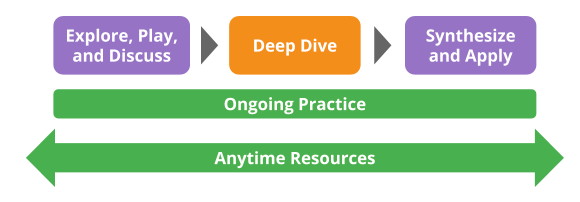
We’ll be creating section-level planning guides for the highest-priority units in each course. Here is what this looks like for one section in Algebra 1, Unit 2:
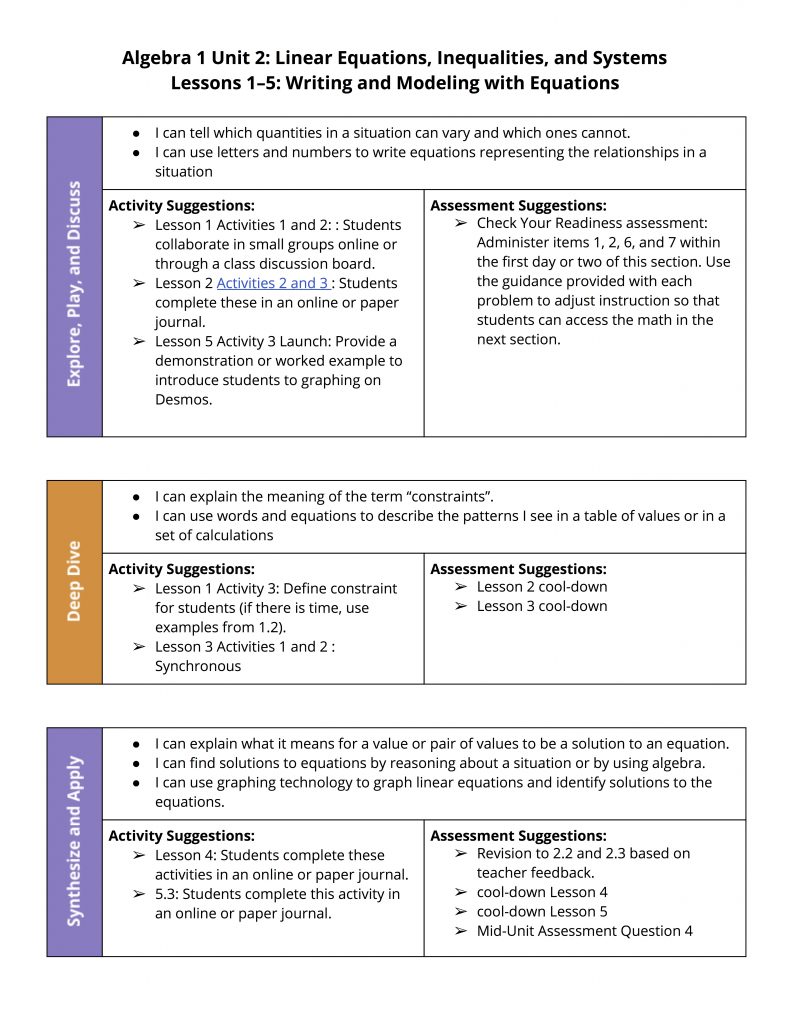
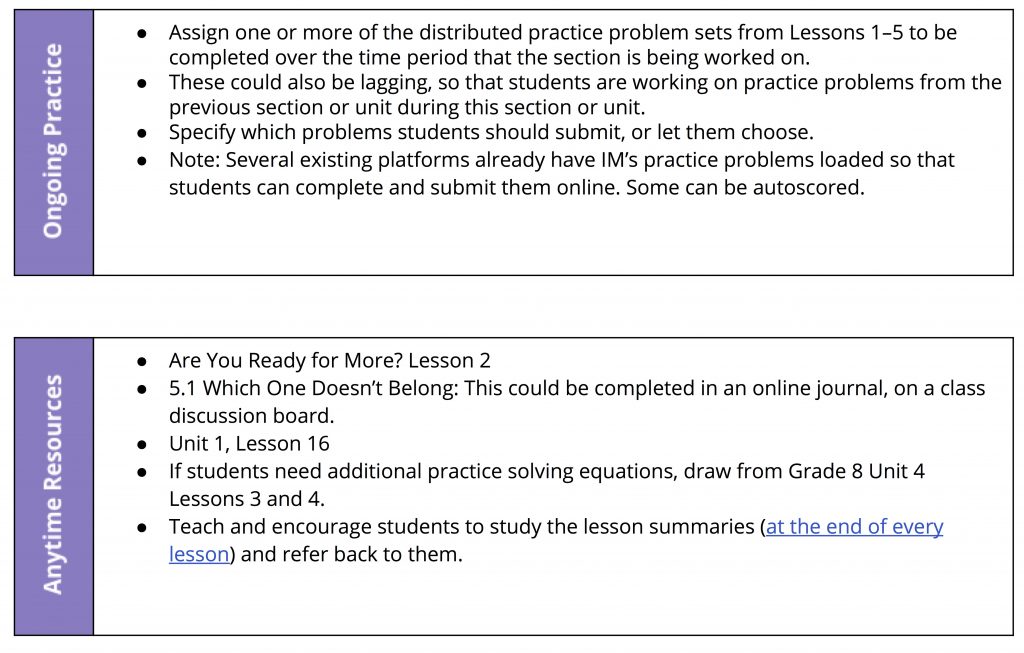
For a more in-depth treatment of how we are thinking about planning for distance learning, please visit this preview document.
Video Lesson Summaries: Multiple Opportunities to Support Learning
Throughout the IM 6–12 materials, each lesson contains a printed student lesson summary. These are intended as the “textbook” part of the student materials. Since it’s a problem-based curriculum, these are printed at the end of each lesson for reference. (It also sidesteps expecting students and teachers to spend class time transcribing notes, which leaves more class time for doing math.)
We have heard from teachers this spring that many of their students have trouble learning from the printed student lesson summaries for various reasons. To help with this, we are creating a series of videos covering the student lesson summaries in grades 6–8 and Algebra 1. These can be used flexibly as needed in a distance learning environment. They can help a teacher readily get a sense for how the ideas unfold in a unit, they can be shared with caregivers who are helping students with math at home, or they can be easily incorporated into learning management systems as part of asynchronous online courses.
Televised Lessons: Preparing Students for Next Year
Ensuring equitable access to free and appropriate education resources for students who missed school due to the COVID-19 pandemic requires thinking beyond computer and internet-based opportunities. Many underserved students do not have access to broadband or devices, but nearly all have access to TV. Public Broadcasting Stations (PBS) around the country have expressed willingness to broadcast instructional programming on a regular schedule.
IM is supporting the development of 96 video lessons that are each 28 minutes long and will be broadcast on PBS stations as well as through streaming services and platforms like Vimeo and YouTube. The Louisiana Department of Education (LDOE) is spearheading the project, the development team lead by SchoolKit is creating the video lessons based on IM Math curricula, and Louisiana Public Broadcasting will serve as the head broadcast partner. There will be 24 videos each for grades 6, 7, 8, and Algebra 1, each selected to help prepare students for the 2020–2021 school year. The videos will be broadcast during summer 2020. In addition to supporting students’ learning at home, the videos will be released under a Creative Commons attribution license that allows for commercial use and posted online. See the first set of videos here:
Access All of the IM Resources in One Place
As of this writing, IM’s curriculum teams are developing these resources as quickly as possible. As they become available, everything will be made available through IM’s certified distribution partners: Kendall Hunt, LearnZillion, and McGraw-Hill. We will be working with our partners to help shape each one’s unique comprehensive distance learning solution comprising these resources and possibly further resources developed by the partner. Resources can also be found through links from our distance learning page. Be sure to follow IM on social media (Twitter/Facebook/LinkedIn) for announcements and updates.
But once it’s ready, everything will also be accessible in a library at . . .
The IM Community Hub
There are lots of enthusiastic and savvy users of IM curricula who will be adapting the materials for various platforms and tools, so we are going to connect them with each other, and invite our community to share materials they make. The hub will also be a place where teachers, coaches, and others who support them can connect, share, and lighten each other’s load. All of the resources mentioned above will be accessible through the hub, once it is online by the end of July.
Next Steps
- Bookmark the IM Distance Learning page for early access to resources that become available.
- Sign up for notifications when the IM Community Hub is up and running.
